Many believe that the invention of the diving breathing autonomous system must be attributed only to Eng, Emil Gagnan and to Commander Jacques-Yves Cousteau. Instead, the history of the discovery of the underwater world goes back to more ancient ages. In fact, this big revolution began at the end of the 18th century with the coining, in 1775 by Abbé de la Chapelle of the word “diving suit” to identify his invention, a kind of rescue jacket made in cork which allowed the soldiers to easily cross the rivers by floating.
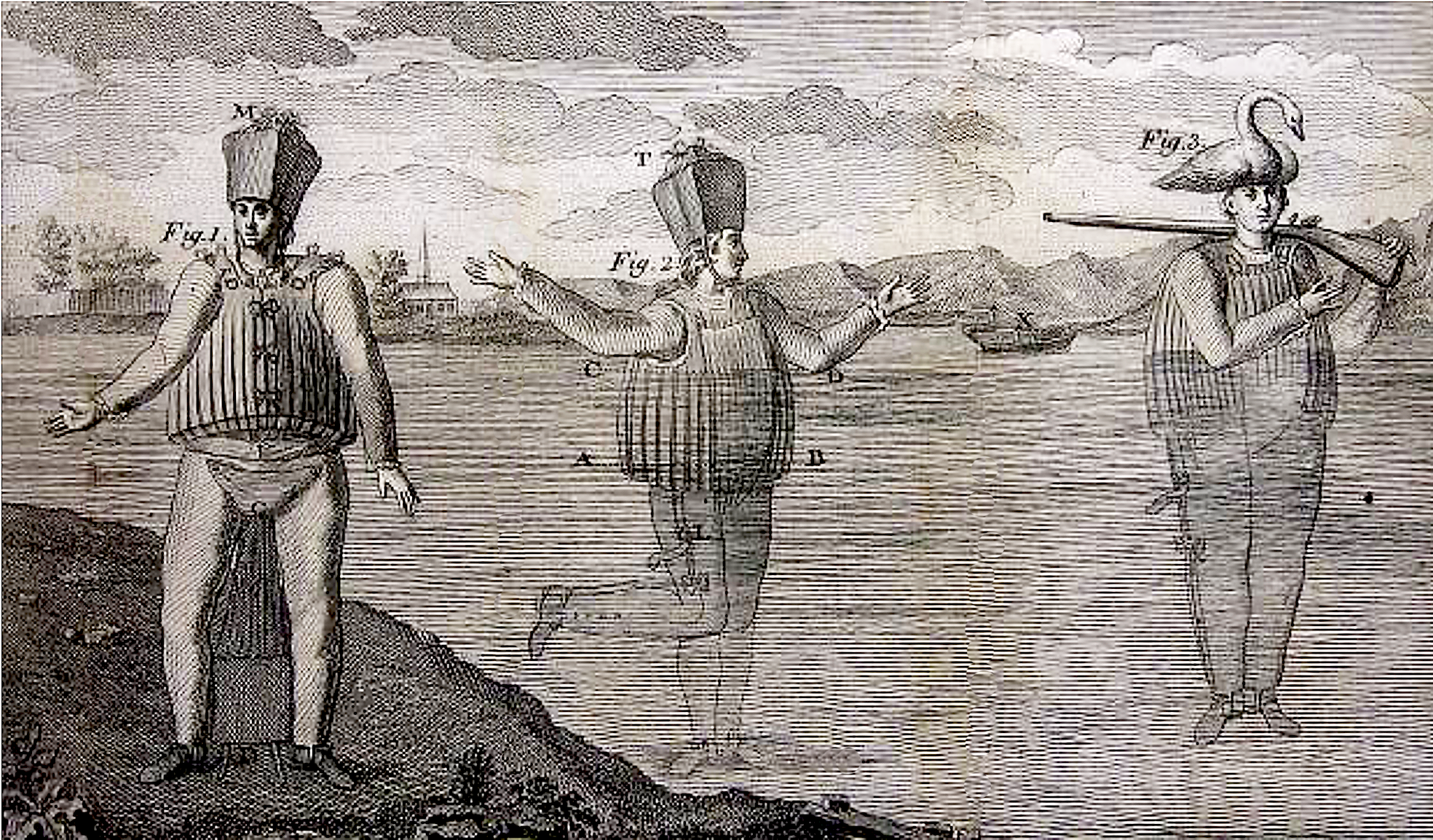
fig. 1 - Cork rescue jacket by Abbé de la Chapelle
In 1820, the Paris dentist Paul Lemaire d'Augerville designs a fire-fighting device that today we may call “isolated self-breathing apparatus”, a system still used by the fire-fighters. This was a kind of armored barrel filled with compressed air, injected in a mask by a valve. Being this device functioning uncertain, it was abandoned immediately. But, far from being discouraged, the inventor, animated by great ambitions and perseverance, decided to create an aquatic version which can be considered one of the fist diving systems to have functioned. The most relevant think of this complex gear was a "swimming belt", almost a prototype of a modern buoyancy compensator, which allowed to descend and ascend. However, the technical difficulties of that period and the complexity to fill a container with high pressures closed this development, from the beginning, to any attempt to realize an autonomous diving system.
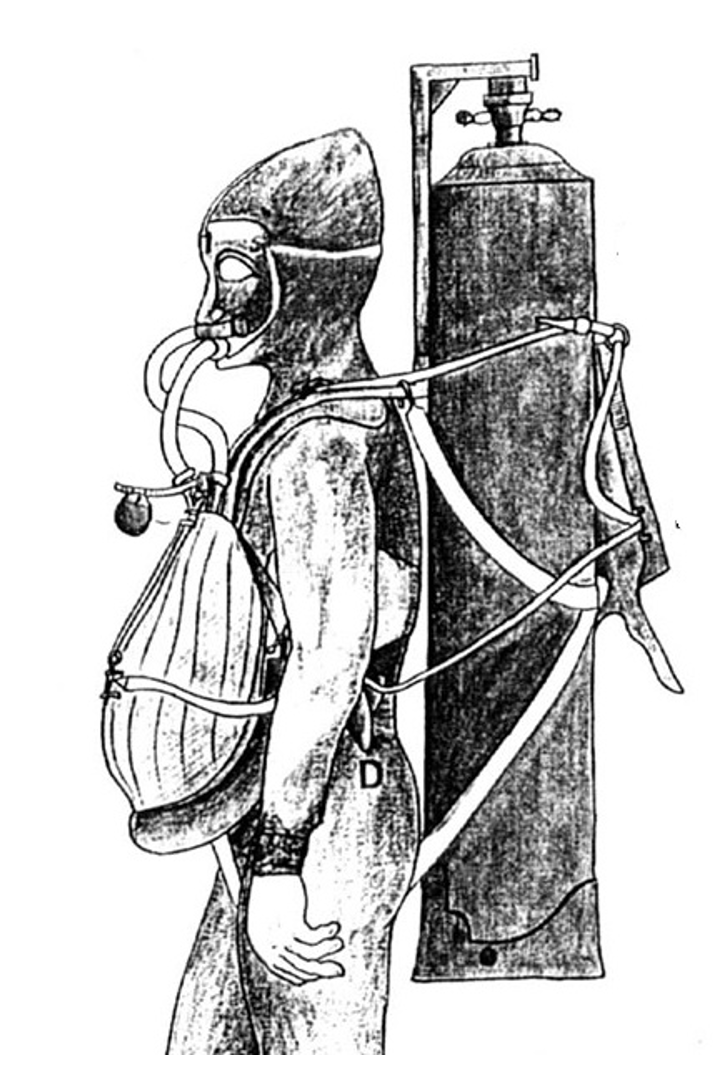
fig. 2 - Paul Lemaire d'Augerville device
We have a change when a certain doctor Manuel-Théodore Guillaumet, in 1838 builds and then patents a device composed of a pressure gauge and a "supply bottle". The idea is to supply the diver with air which, before getting to his mouth, passes through a regulator apparatus able to bring the pressure exactly as the ambient one.
The system functioned through a pump actioned by a man in the surface who, by a canvass hose made waterproof with a rubber layer, compressed air in a bottle worn by the diver in his back, bringing it at a pressure higher of the one which corresponded to the depth where he had to descend. At this point, compressed air streamed in the Guillaumet device, practically a regulator, to be equalized at the ambient pressure. From this reserve, air arrived to the diver’s mouth always by means of the rubberized canvass hose connected to the mouthpiece with a flap valve which opened by inhaling and closed during exhaling. Phase which opened another one, situated at the inlet of the hose designed to discharge air.
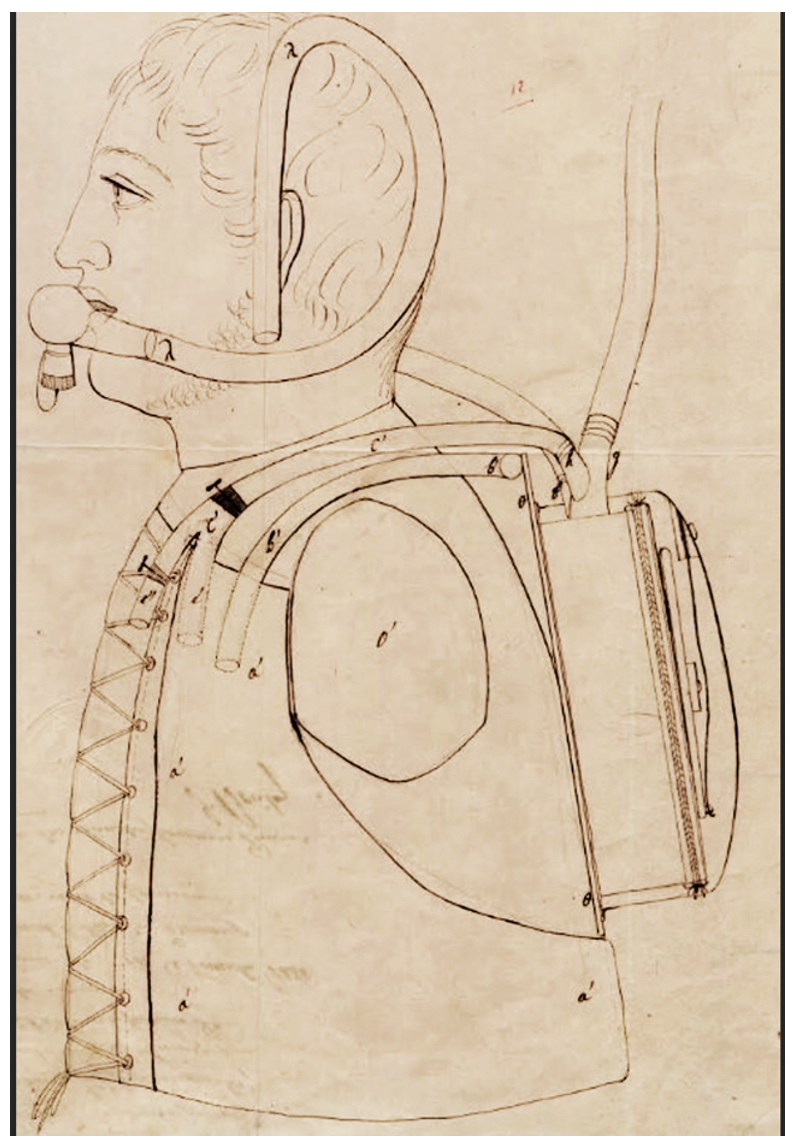
fig. 3 - Doctor Manuel-Théodore Guillaumet device
Although Dr. Guillaumet's system was certainly better than all of the devices of the past, it still presented big gaps; first of all, it was not autonomous. In fact, air was supplied by the pump in the surface; there wasn’t a real intermediate reserve and, at lastly, it did not include any device that would allow the diver an adequate vision. In spite of that, this ingenious apparatus became the inspiration for all future systems.
Until the middle of 1800, nothing more happens; efforts towards a diver's non-dependence on the surface do not produce significant progress and this seems to be quite accepted. Until, in France in December 1855, Mineral, a company of the mine industry decides to award a prize to the inventor who will present the best portable device able to consent the entrance in obstructed spaces full of gases, unbreathable or flooded. Not much time passes and a collaborator of Mineral itself, a young engineer named Benoît Rouquayrol who has long been involved in rescue processes in mines, presents a particularly interesting work. This devices functions with the same principle of that of doctor Théodore Guillaumet and it will be patented by Rouquayrol in April 1860.
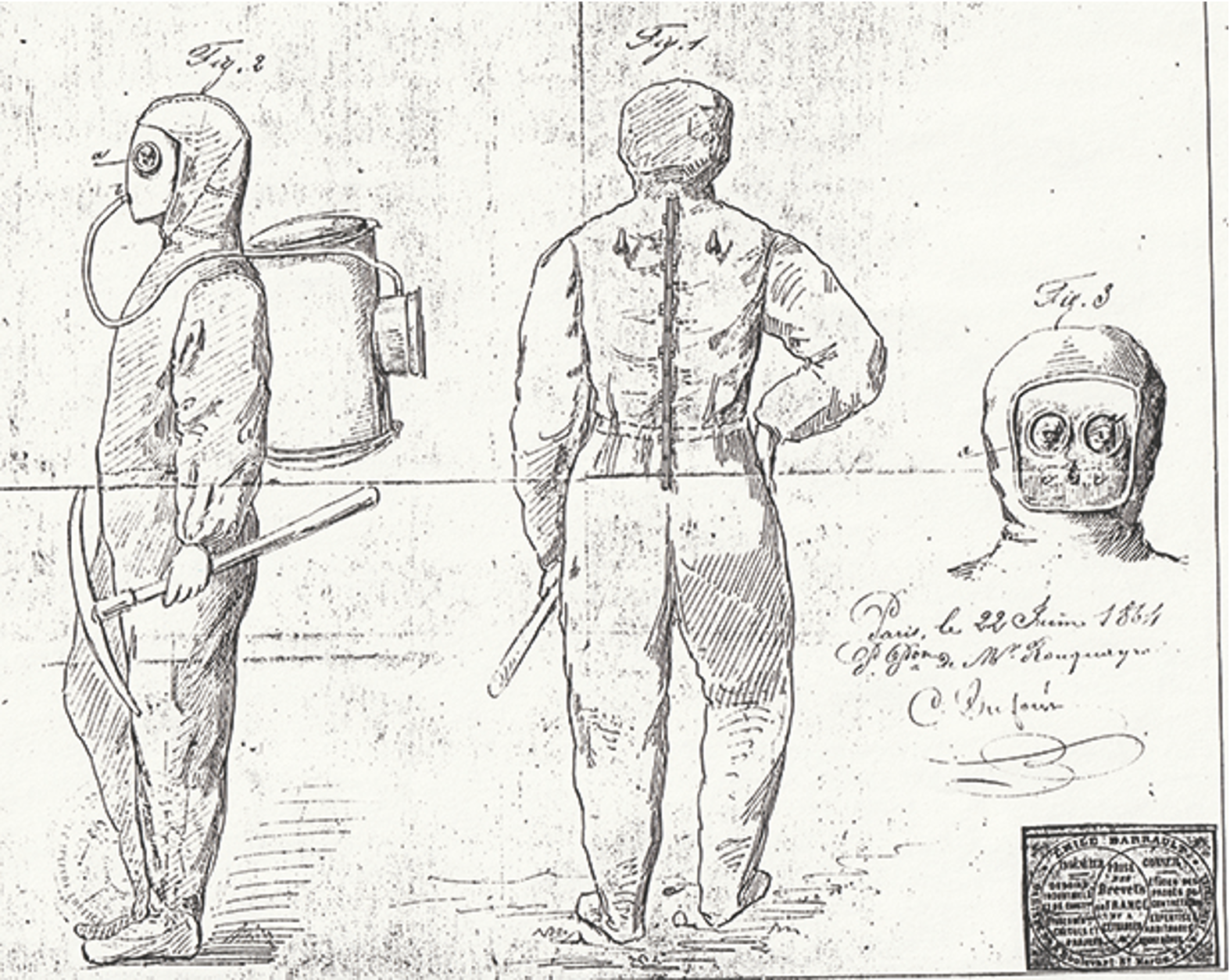
fig. 4 - Design annexed to the Rouquayrol patent named self-breathing apparatus supplied by normal and not compressed air
In January 1862, Rouquayrol deposits a new patent: the 'Rouquayrol Isolator' composed by his previous system, a mask with nose clip and a rubber mouthpiece fixed in a metallic hook. With this simple expedient, people could avoid the bulky and heavy diver’s helmet. A third patent is deposited in 1863 for a surface water cooled pump, designed to supply air to his device. At this point, Rouquayrol had only to combine his three inventions: a pump to pressurize air, a container which could store high pressure air and a demand regulator. From the regulator, the diver could breathe without problems from a mouthpiece, thus obtaining a pressurized system which allowed to detach the hose in case of need, permitting the diver to have an autonomous air reserve to move freely. But, as often happens, to transform a good idea in a real project, something is needed which cannot be present in all big inventors. This "something" Rouquayrol will find it in Auguste Denayrouze, a Navy lieutenant on temporary leave because of a disease taken during an expedition in Cocincina. During his stay in Espalion, Denayrouze discovers the new inventions of Rouquayrol, who knew being of the same Aveyron region, and remotely related. From the beginning, thanks to the experience acquired with Joseph-Martin Cabirol, french inventor of professional divers’ gear based on drawings of Augustus Siebe, glimpses the big potentialities of Rouquayrol “Regulator” system to be adapted to a diving version. Enthusiast of his friend’s device, Denayrouze already imagined how this equipment, designed to save human lives in mines, could be adapted to the National Navy needs. Shortly after the meeting between the two, Denayrouze transfers to Paris to fully develop the project and there, with the contribution of an artisan named Aygalenc who actively participates with some improvements, they begin to modify the device given by Rouquayrol. Now set in Paris, besides constantly informing Rouquayrol about his progressed and the technical details of the new self-breathing apparatus, Denayrouze will find himself to work also in the commercial sector. Thanks to his relationships, he succeeds to introduce this new diving system in a rescue work in which the National Navy was involved. The system proves to function admirably, so much to convince the Navy to ask to Denayrouze to commits to further develop it, with a view to future applications.
In 1864, the same year of the trial made by the Navy, Benoît Rouquayrol and Auguste Denayrouze patent some variants of their system. An intermediate tank for the surface-supplied version with manual pump and, as alternative use, a tank for compressed air with 40 atmospheres for the autonomous version. With these variants, they give rise to the first, real autonomous diving device and, above all, they anticipate the design principles of the current diving self-breathing systems.
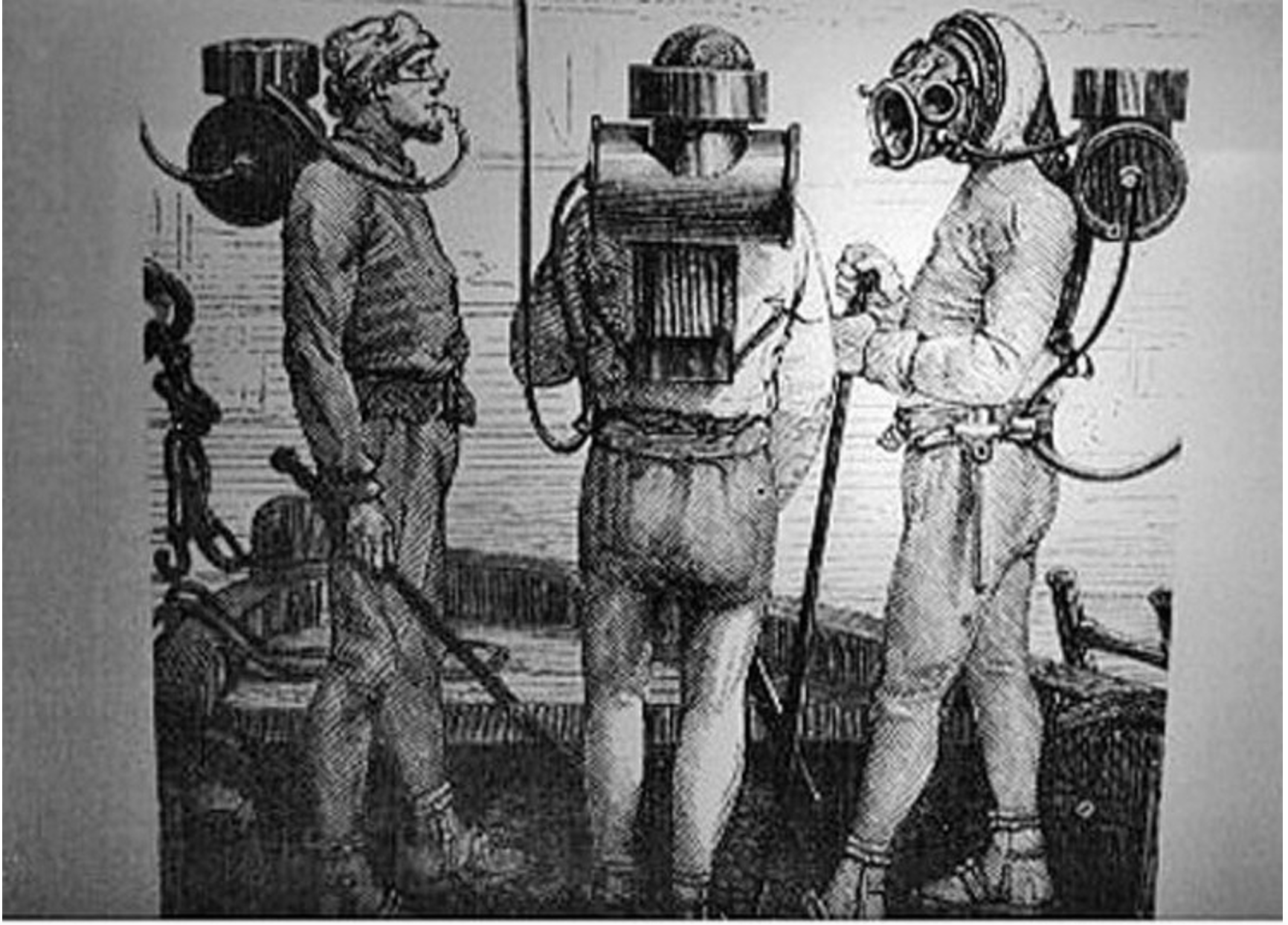
fig. 5 - Rouquayrol-Denayrouze devices
To better adapt the system to the practical use, to the original patents of 1864, other two versions will follow. The first one was conceived both for diving and mine environments called “low pressure”, where the tank supplied with air arriving by the surface pump could have a volume between 8 and 25 liters. The second one, mainly designed for the marine environment called “high pressure”, had a tank of 35 liters which contained a pressurized air reserve at 30 atmospheres. This second version could be independent, guaranteeing an autonomy of about twenty-five minutes at 10 meters of depth. Of this last variant, considered that copper was too weak, they realized a second model in steel with reinforcement rivets to be pressurized up to 40 atmospheres.
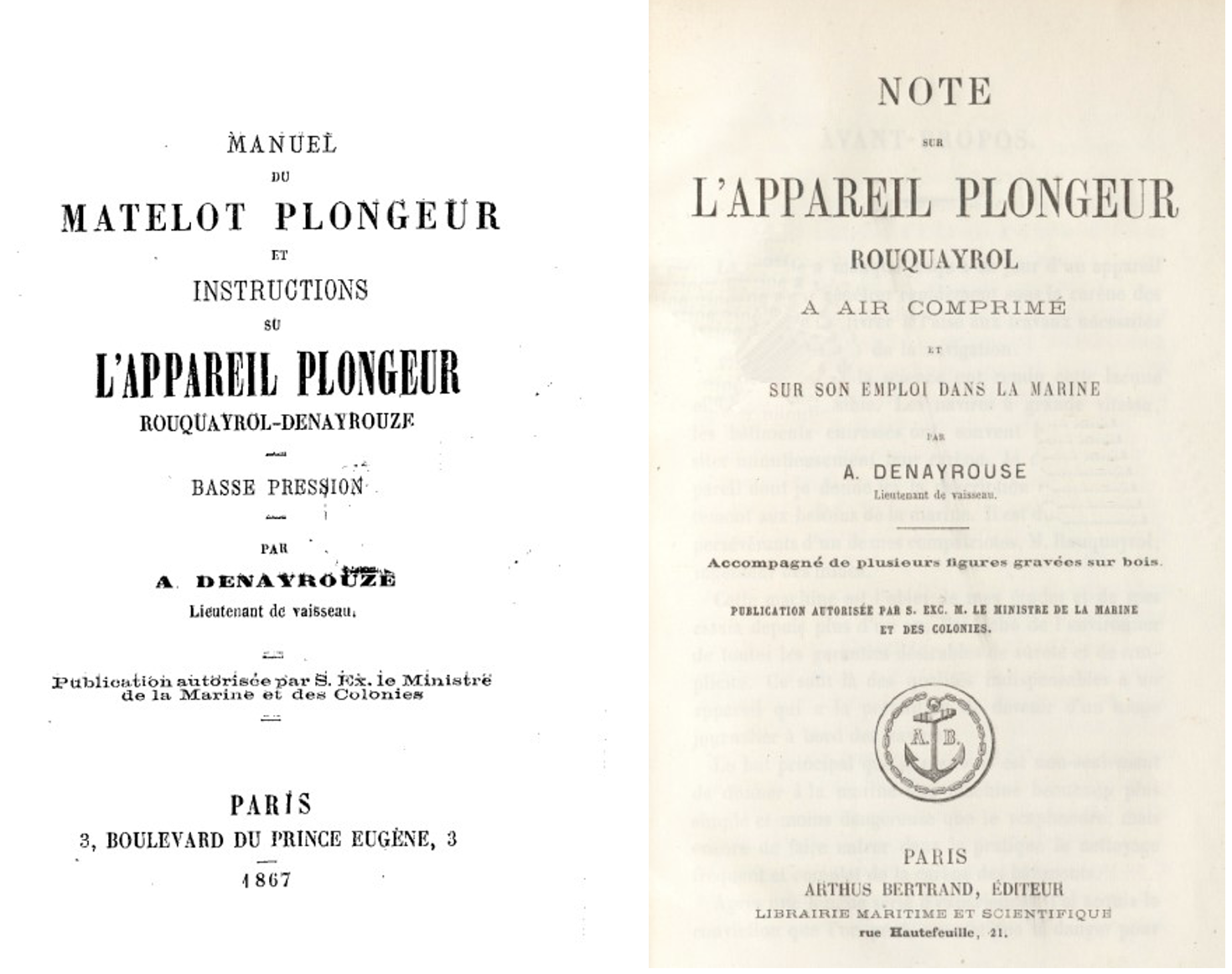
fig. 6 - Use manuals of Rouquayrol and Denayrouze systems
Always in 1864, to better protect divers from low temperatures of depths, Rouquayrol and Denayrouze realized and patented a waterproof suit in rubberized canvass similar to those already used by professional divers.
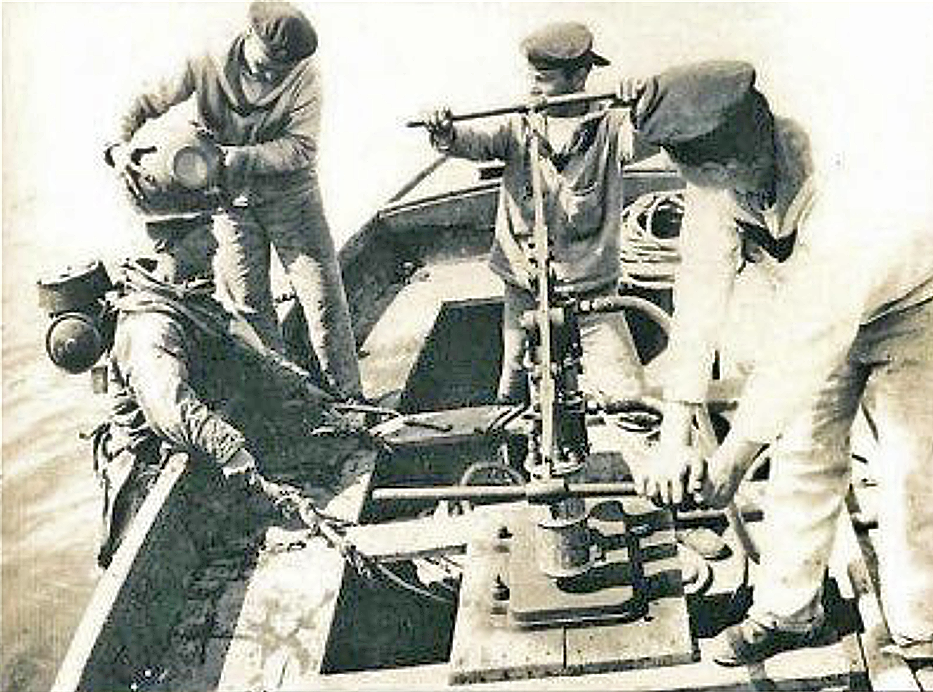
fig. 7 - Rouquayrol and Denayrouze system
Together with this suit, in their patent they inserted a small "bell" for the head, which fills progressively with air when the diver exhales. In this way, they thought that, besides protecting his head, the diver could see quite clearly through the porthole. The equipment was completed with nose clips and lead soles of eight kilograms each. The first tests of this system are made by some free divers of Espalion who dive with open eyes without any kind of protection. Now, the diver has an efficient life support; he wears a thermal protection but the two inventors, in 1865 acknowledge that the bell just patented is insufficient for an optimum vision. Therefore, they file the original idea and design a full-face copper mask to be used combined with the diving suit. Because of its shape, they call it “pig snout”.
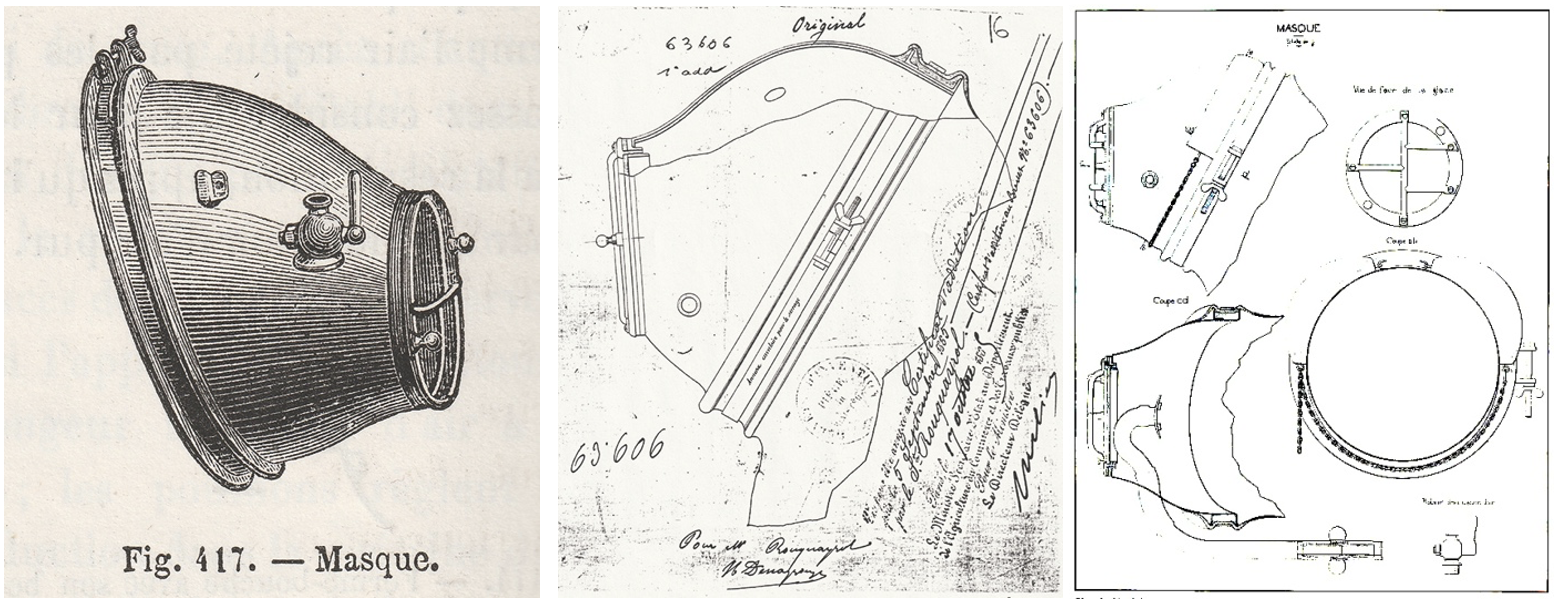
fig. 8 - “Pig snout” mask
This mask’s functioning is very easy. Unlike the professional divers’ helmet where air enters into the helmet, here air coming from the regulator arrives directly to the diver by a mouthpiece installed inside, while exhaled gases are expelled by a manual operated valve equipped with a non-return valve. Over the time, there are three patents for this mask that follow one another, passing from the variant with one to three portholes and, at the end, to four. However, the difficulties encountered by the divers who were wearing them brought, in 1866, to change the pig snout mask to the more traditional professional divers’ helmet, equipped with the same mouthpiece and valve for expelling stale air. The year before, they deposited a patent to equip this system with a whistle to worn the diver of the reserve air low level; then, they patent a metallic fiber filter to prevent that marine particles obstruct the flexible rubberized canvass membrane of the regulator.
Other inventions are the push-button valve where the diver, by pressing with his head, allows stale or excess air to flow out; the Denayrouze helmet in 1873 with three bolts to fix the diver’s suit to the helmet; the air inflow system, which does not happen with a mouthpiece but directly in the helmet including, besides the manual valve of stale air evacuation, the news of the so-called push-button valve. Also, they design an intermediate tank positioned between the pump and the helmet to guarantee a regular air supply protecting, among others, the diver’s ears from the possible pressure differences generated by the traditional pumps which supply air directly into the helmets. Further patents are deposited during the time also by Louis Denayrouze, Auguste brother: the Aerophore, a device designed for rescuing in mining environments; a kerosene waterproof lamp to be used underwater; the diving acoustic horn, that is the first telephone allowing the diver to communicate with his surface assistants. At last, the helmet with Denayrouze hook, a system to fix it without bolts.
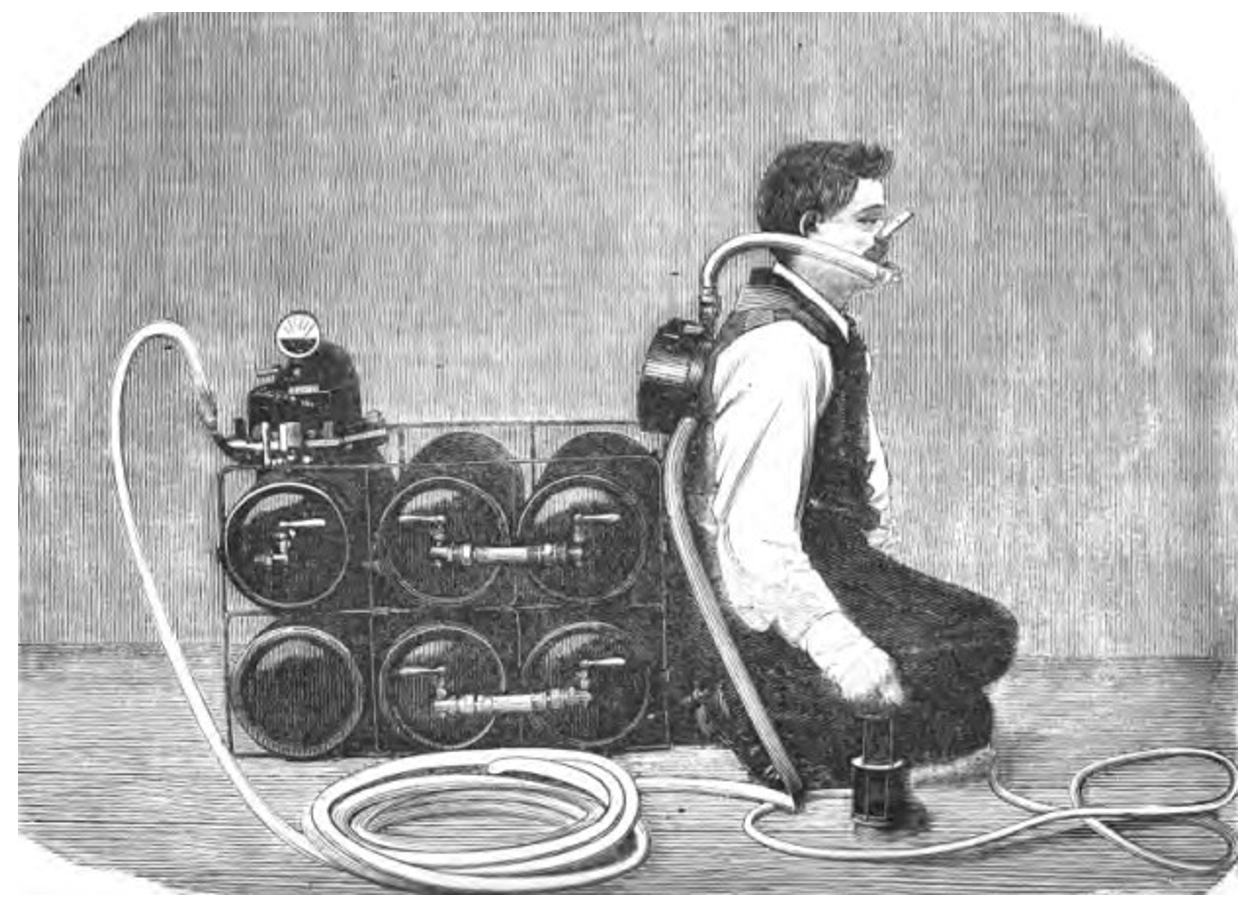
fig. 9 - Aerophore
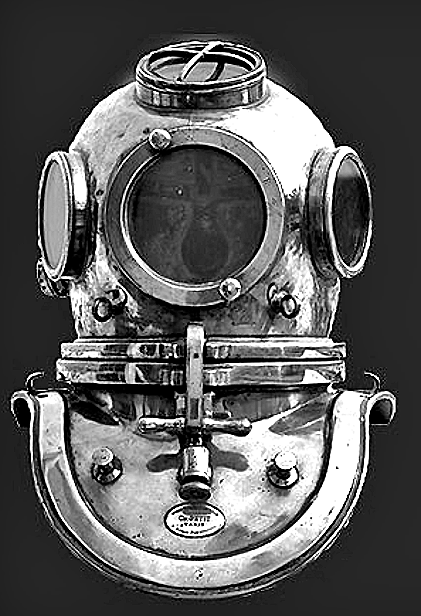
fig. 10 - Helmet with Denayrouze hook
Curiosity: Rouquayrol and Denayrouze inventions received the gold medal at the Universal exposition in Paris in 1867 and Jules Verne inspired himself to equip his Captain Nemo and his staff in " Twenty Thousand Leagues Under the Sea".
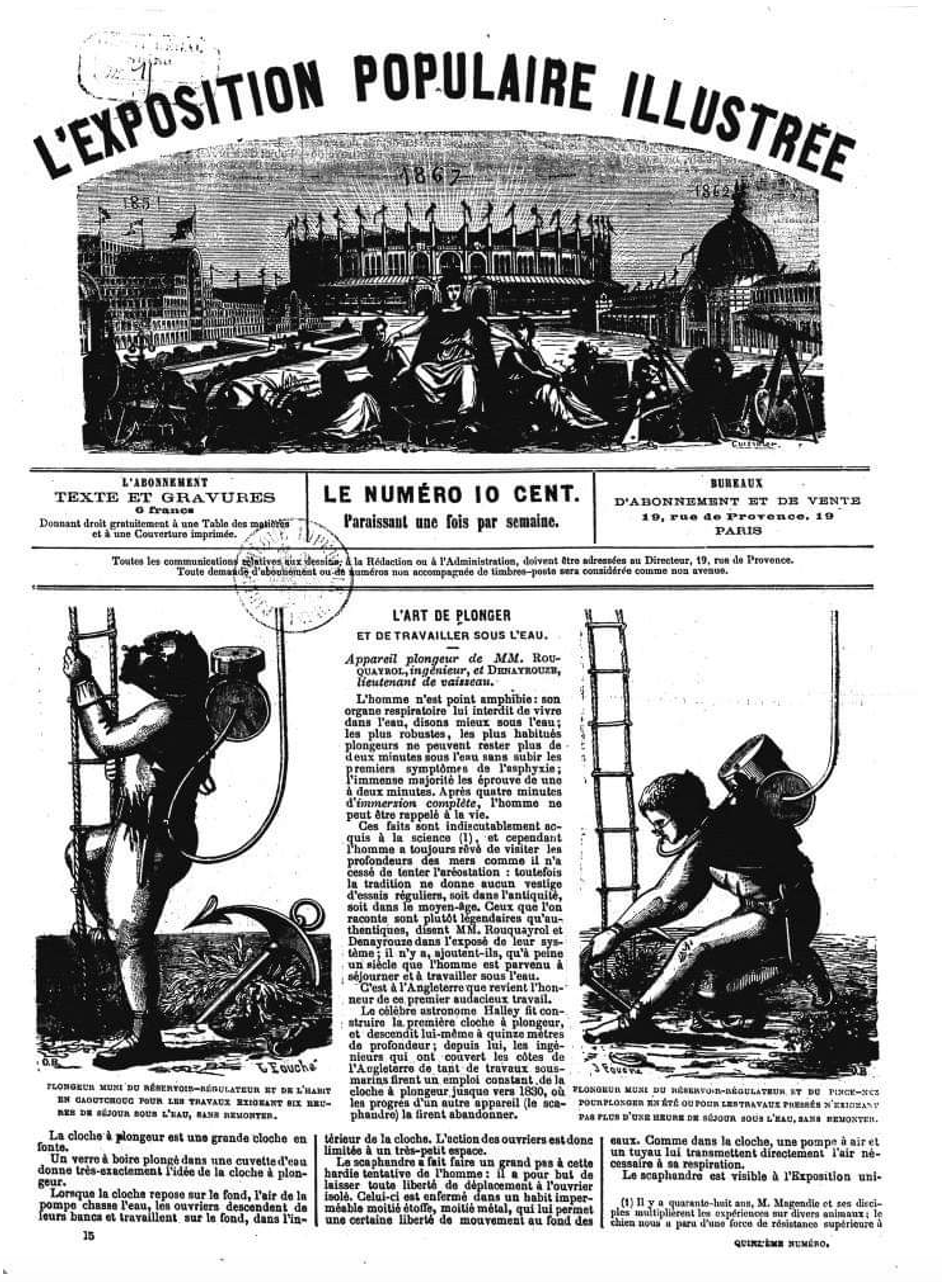
fig. 11 - Newspaper page dedicated to the Universal exposition in Paris
The Rouquayrol and Denayrouze system, with his several improvements, was object of several patents until 1910; about 1.500 units were manufactured to satisfy the needs of the different National navies and plumbing works company, as well as for sponge fishing. Among others, besides to create in 1865 the Rouquayrol-Denayrouze company for the sale and production of their diving systems, Auguste Denayrouze founds also the “Société Française de Pêche aux Sponges pour la Méditerranée Orientale” (French society of sponge fishing in the west Mediterranean Sea), with headquarter in Turkey. In 1869, he entrusts it to this brother Louis so he could better market the system in the west Mediterranean Sea.
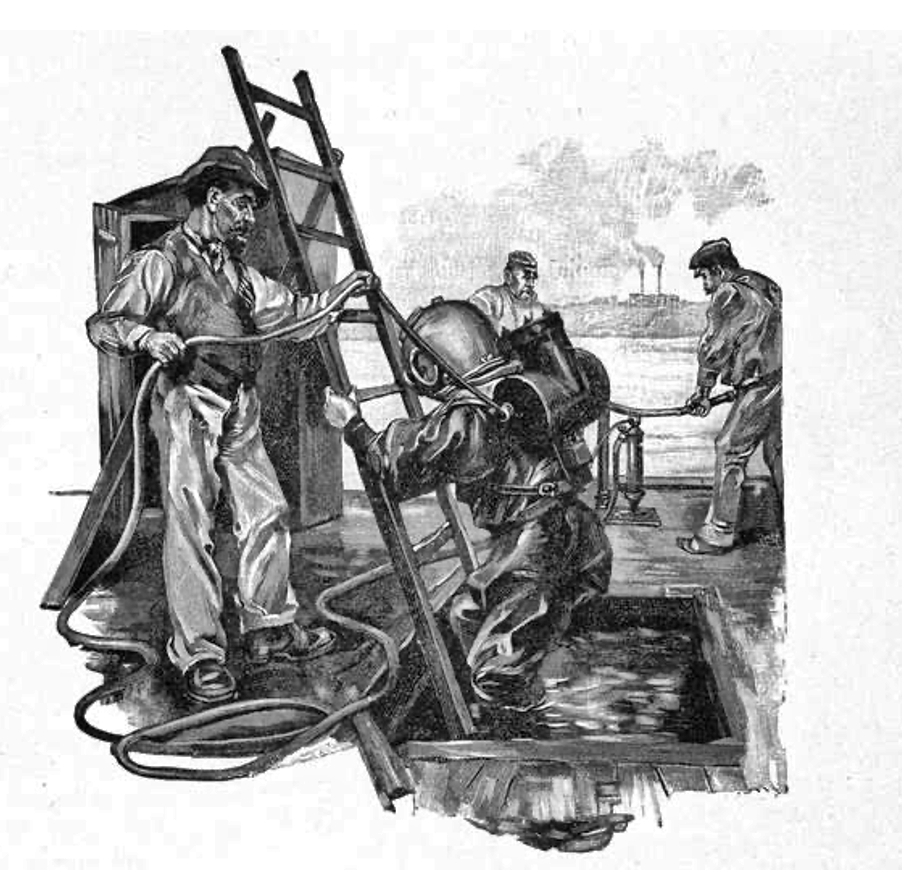
fig.12 - Rouquayrol and Denayrouze system
These two companies are released in 1874 for a single company named Société des Spécialités Mécaniques Réunies (reunited mechanical specialties company) with Louis Denayrouze as director. Ten years after, in 1884, there is another change of statute and the company becomes Société Anonyme des Spécialités Mécaniques (mechanical specialties anonymous company) where Louis Denayrouze, not director anymore, will remain with the post of engineer and counselor until 1895. In that year, Charles Petit, owner of the namesake Société Charles Petit (Charles Petit company), buys the Louis Denayrouze la Spécialités Mécaniques. After the first World Was, in 1920, Charles Petit ties the forces with his daughter fiancé, René Piel, and the name of the company changes in Société Charles Petit et René Piel. In 1930, the company becomes Établissements René Piel (René Piel factory) to change in 1939 in Société Anonyme René Piel (René Piel anonymous company). Bernard Piel, son of René takes over the activity in 1940 which becomes Établissements Bernard Piel (Bernard Piel factory). In 1965, Bernard Piel has been the last manufacturer of Rouquayrol-Denayrouze diving gear.
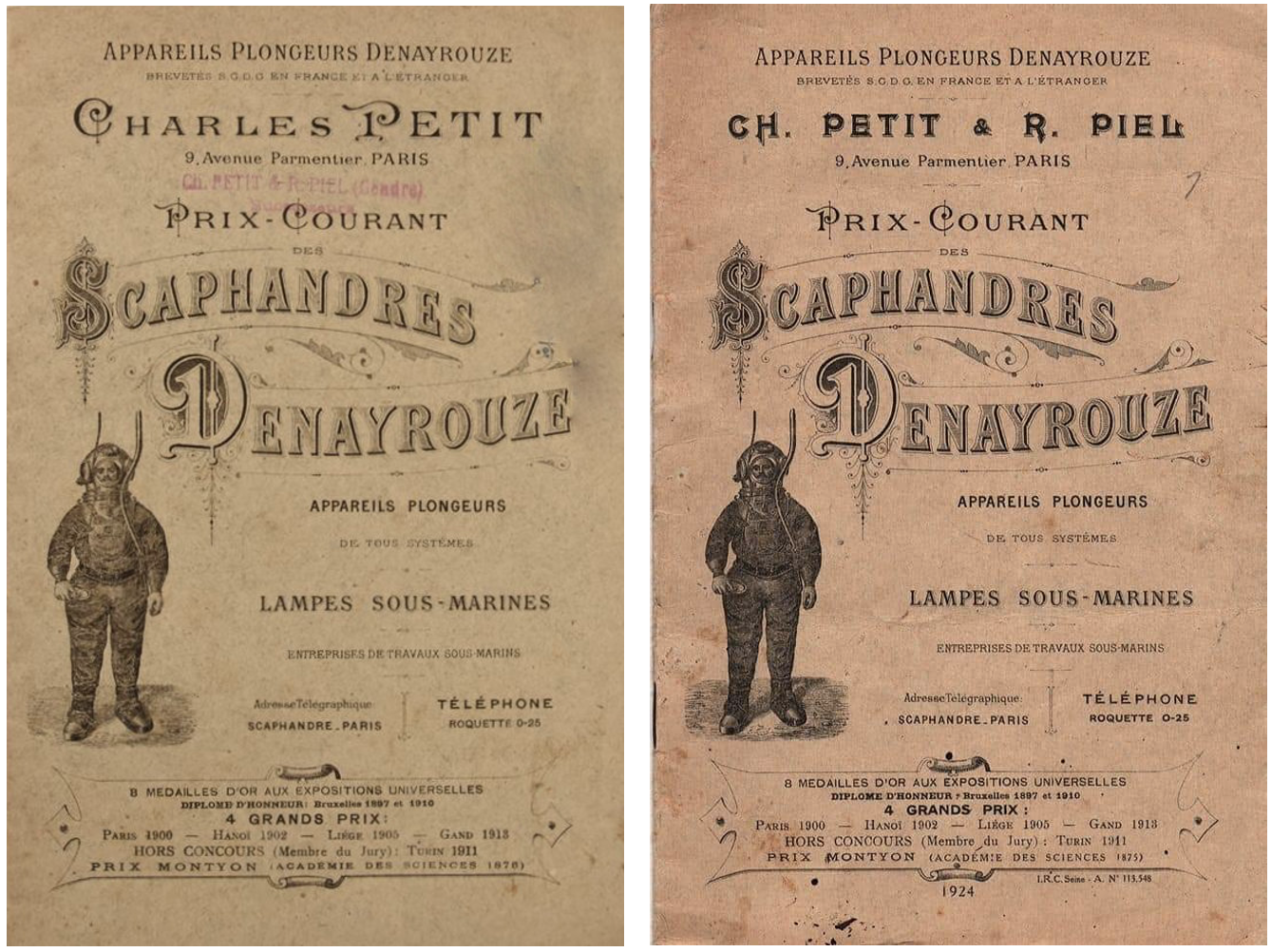
fig. 13 - Advertising of the Denayrouze Petit and Denayrouze Petit & Piel professional suits
As final consideration we should notice that the Rouquayrol-Denayrouze, besides having directed a production and design path that would make the history of diving, continued his way for almost a century, from 1874 to 1965, considered that the license plates of the companies that followed always showed the header 'Denayrouze diving apparatus' and, only afterwards was the name of the company, which changed depending on the times. Today, the only original device of 1864 from Rouquayrol-Denayrouze is preserved in France in Espalion, hometown of Rouquayrol, exposed at the Diving Museum and donated by the Piel company, the last heir in the succession of the Denayrouze and Charles Petit companies.
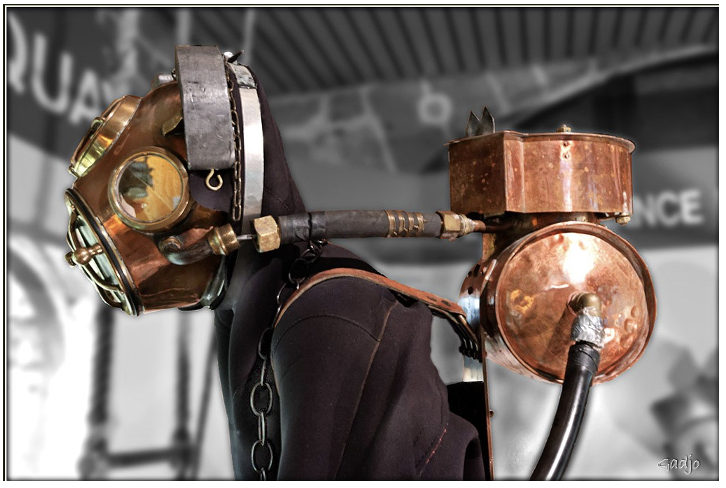
fig. 14 - Original Rouquayrol-Denayrouze device of 1864, preserved in France in Espalion
But how this Rouquayrol-Denayrouze system functioned? The apparatus was conceived so that the diver could, in case of need, draw to a sufficient air reserve to calmly ascend to the surface. To respect such a condition, some air is compressed in a tank. However, air to be inhaled without being dangerous must have a pressure equal to the one exerted in lungs by the surrounding pressure, “equal pressure” principle. Otherwise, an overpressure also if small would damage or it would even cause lung tissue to burst.
Let’s see how Benoît Rouquayrol solved this problem in an excellent way. The diver wears, in his back, a tank with the compressed air reserve (R1). This tank called “little tray” because of its shape, is connected to a surface-operated pump with a hose, as it was used for professional divers. The key point is of the devise is its on demand regulator, based on a flexible membrane integral to a valve (identifiable in the drawings with the red color) which triggered an air flow caused by the diver's inhalation.
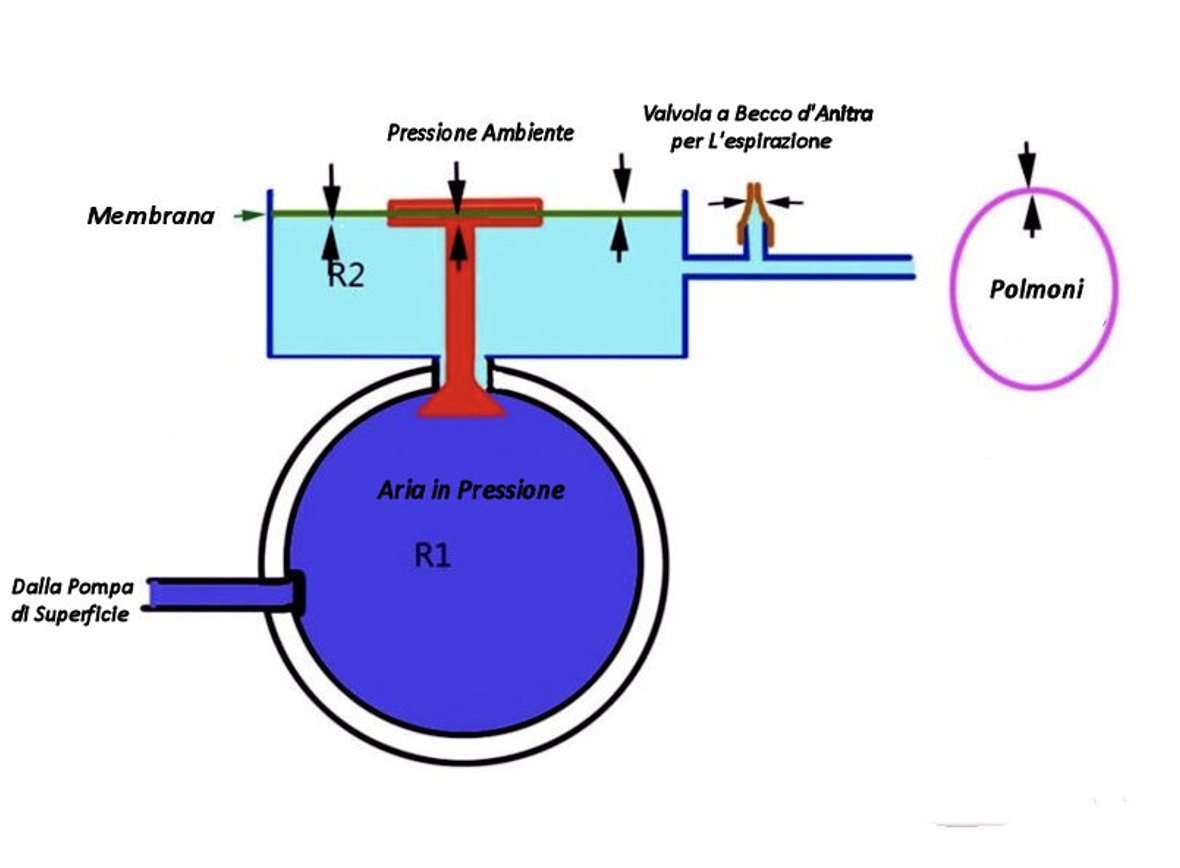
fig. 15 - The regulator unit in a situation of equal pressures
When the system is in equilibrium, the pressure in R2 compartment is equivalent to the ambient pressure and to the pulmonary one. The flexible membrane remains flat, therefore also the red valve which divides R1 from R2 remains closed, by stopping the compressed air flow from R1 tank.
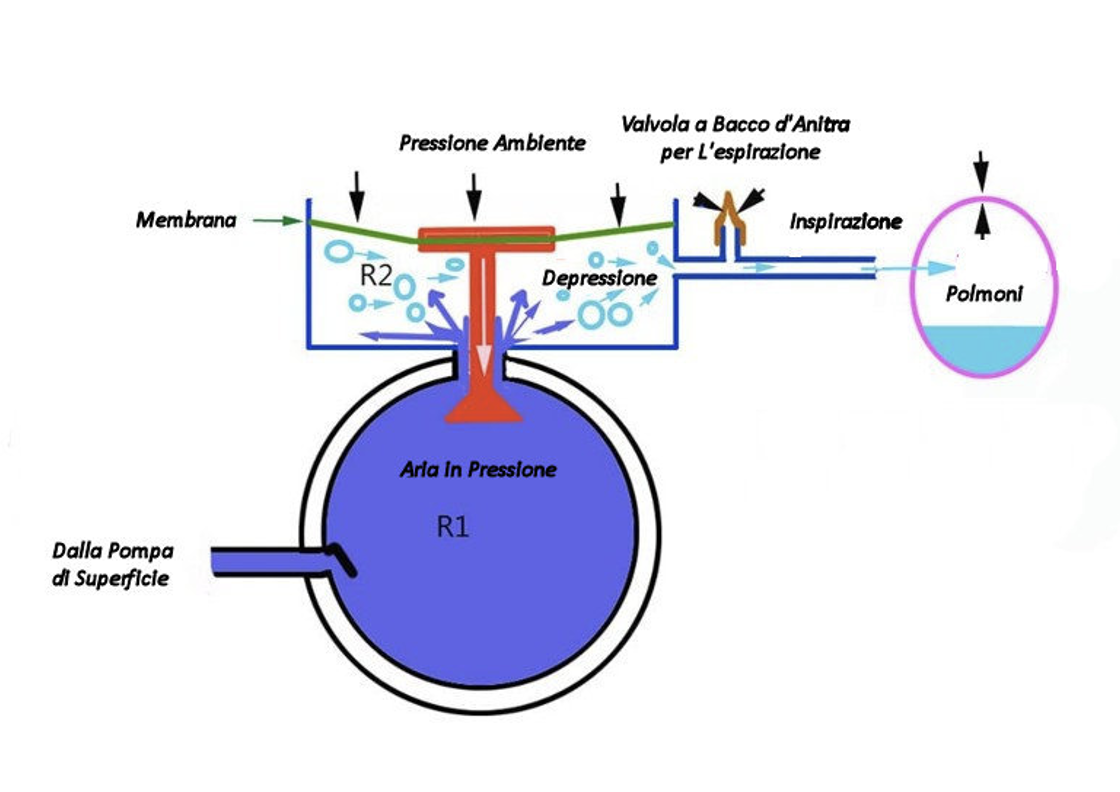
fig. 16 - The regulator unit during inhalation
When the system is in equilibrium, the pressure in R2 compartment is equivalent to the ambient pressure and to the pulmonary one. The flexible membrane remains flat, therefore also the red valve which divides R1 from R2 remains closed, by stopping the compressed air flow from R1 tank.
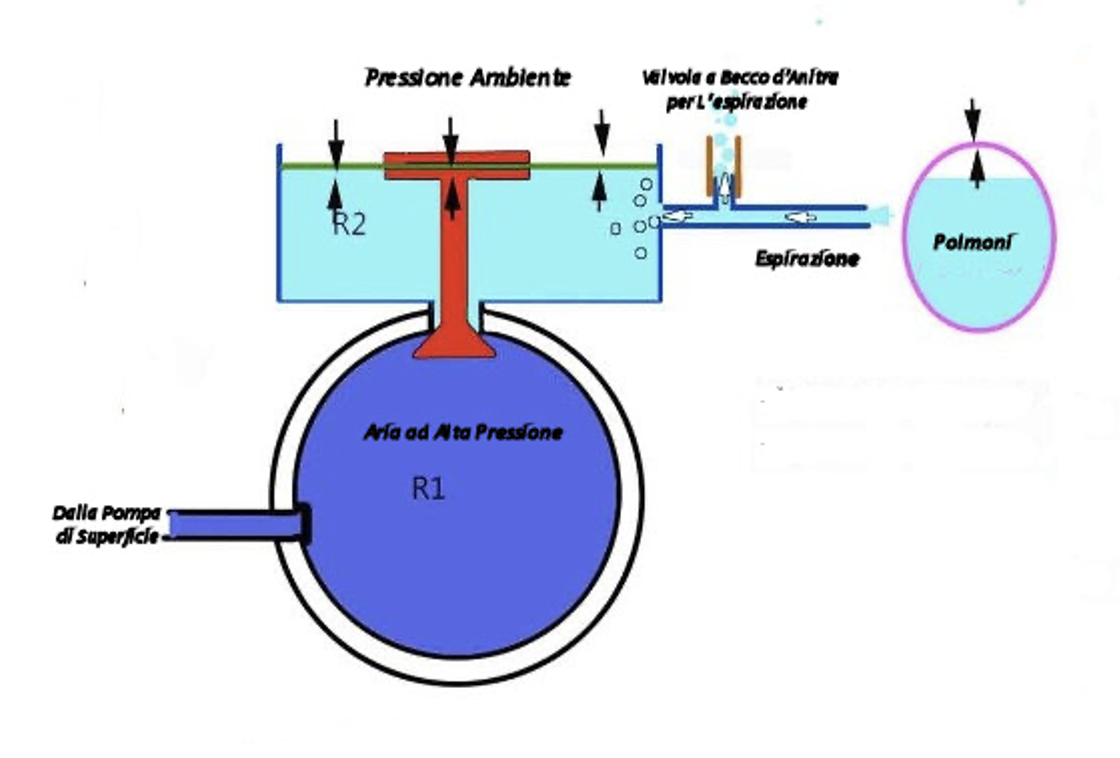
fig. 17 - The regulator unit during inhalation
When the diver begins to inhale, he creates a depression and the R2 compartment begins to empty. At this point, the ambient pressure which pulls the flexible membrane, bends it and acts in the red valve, by opening it and allowing the compressed air from R1 tank to flow.
The scope of Benoît Rouquayrol and Auguste Denayrouze inventions were of great impact for the diving world, much wider of what we can imagine. In fact, they not only give rise to the first truly autonomous device intended for diving but, with their system, they will dictate, even if only in principle, the design of future underwater regulators.
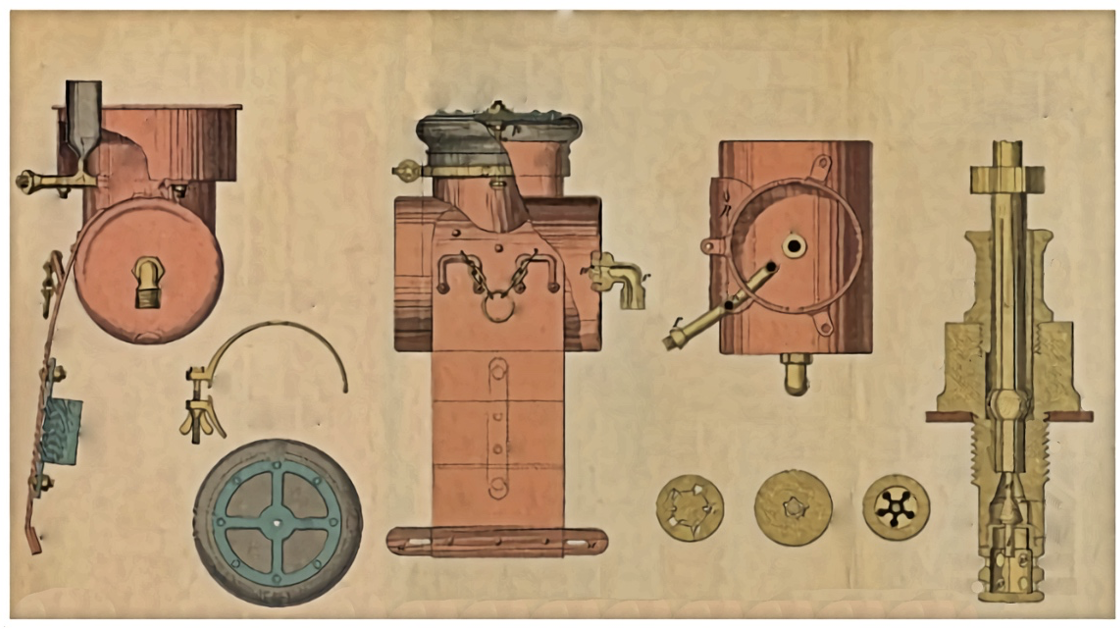
fig. 18 - Rouquayrol - Denayrouze system
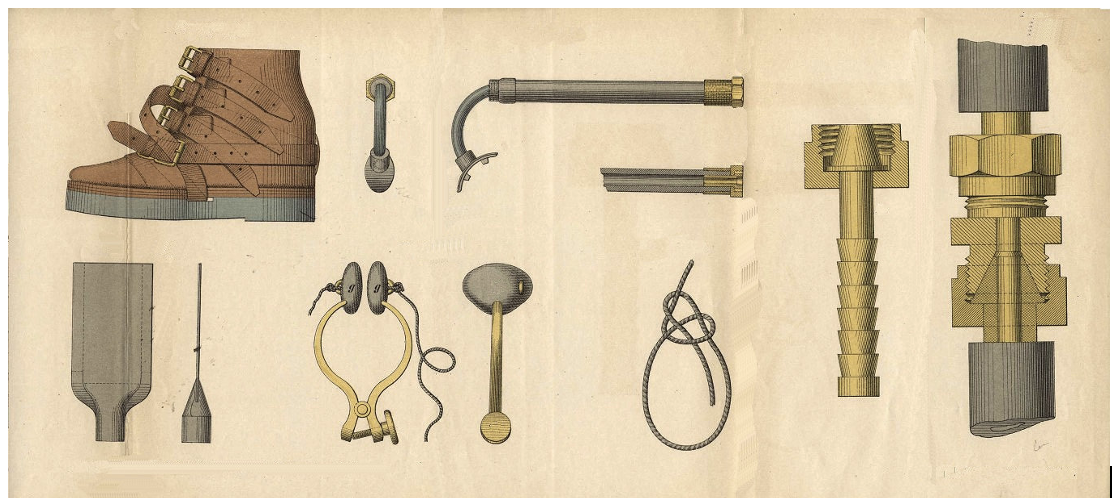
fig. 19 - Accessories for the Rouquayrol - Denayrouze system
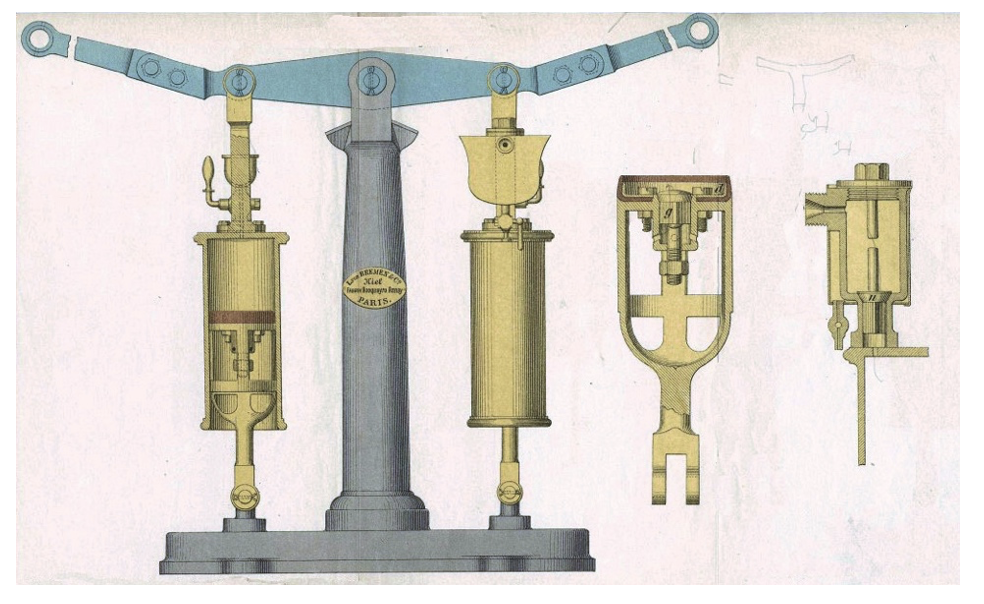
fig. 20 - Pump for the Rouquayrol - Denayrouze system
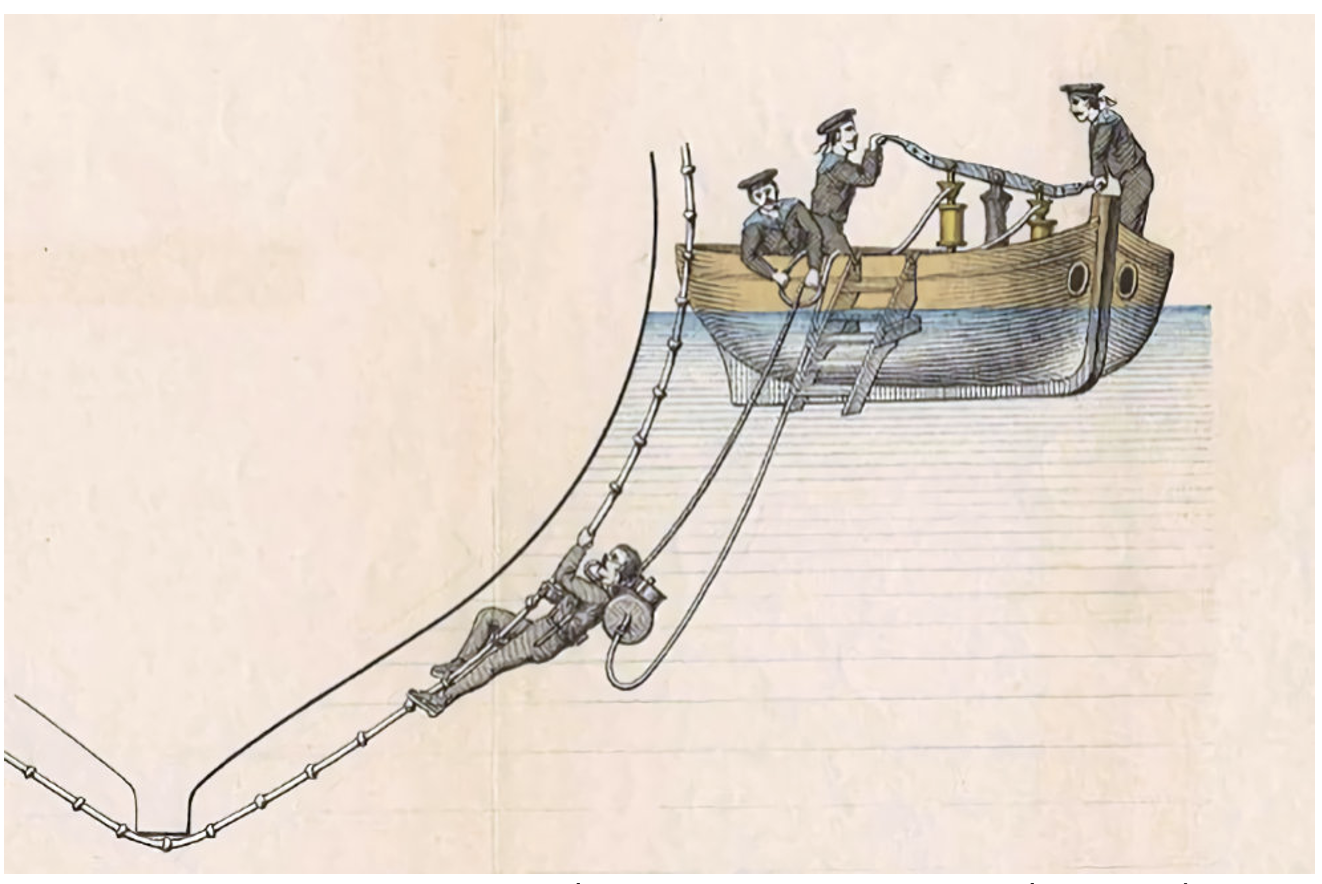
Fig. 21 -Operator using a Rouquayrol–Denayrouze system to inspect the hull of a ship
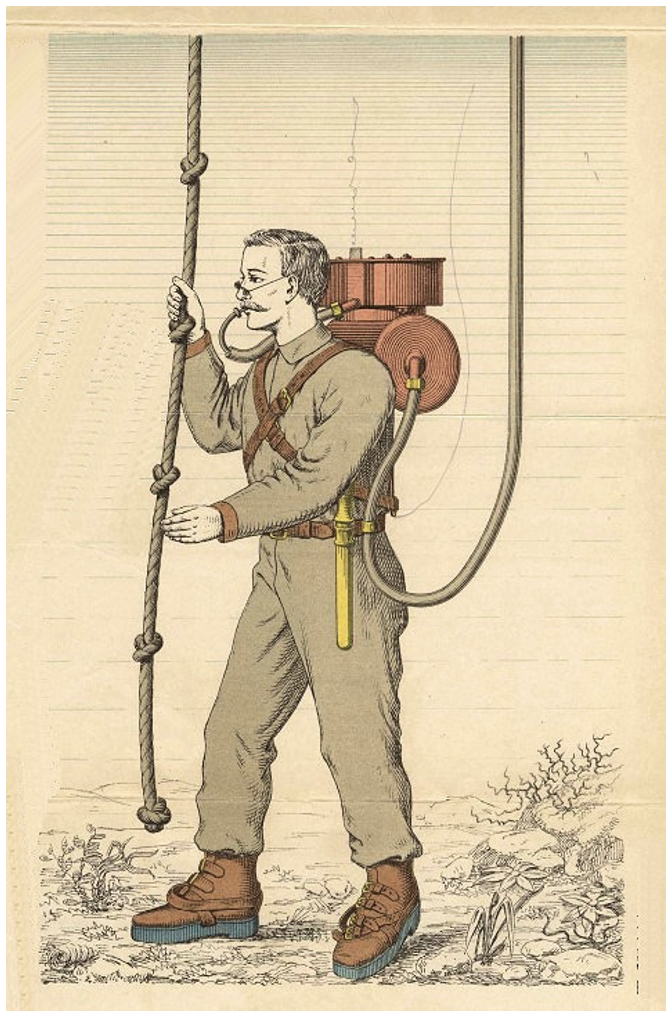
fig. 22 - Diver wearing a Rouquayrol - Denayrouze system
__________________